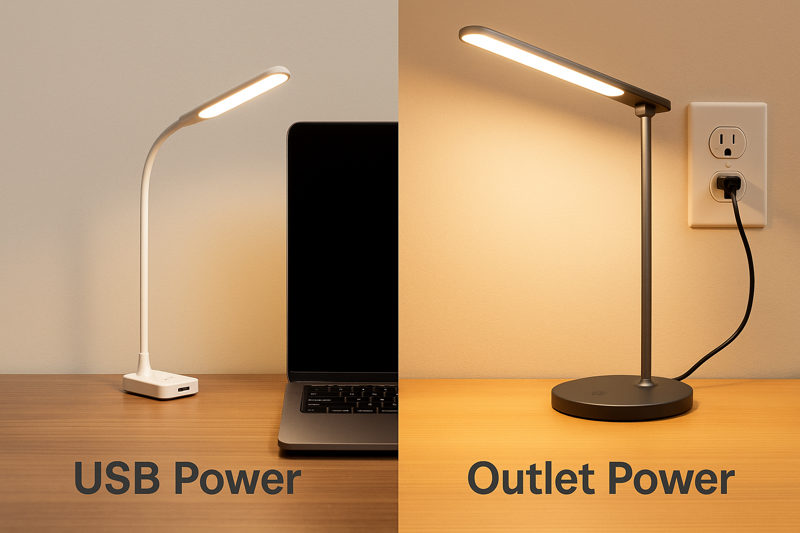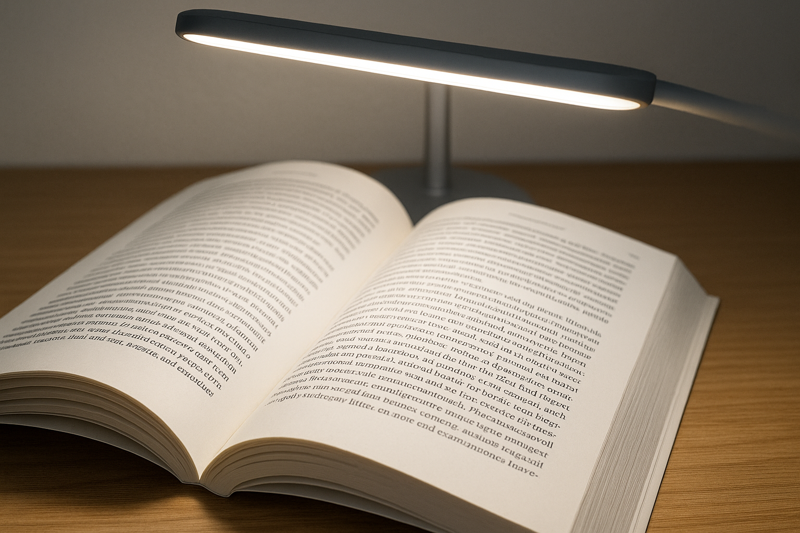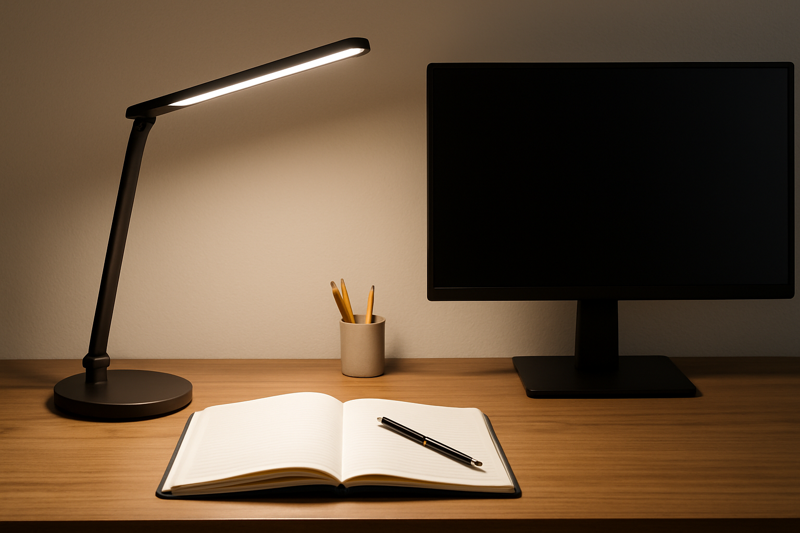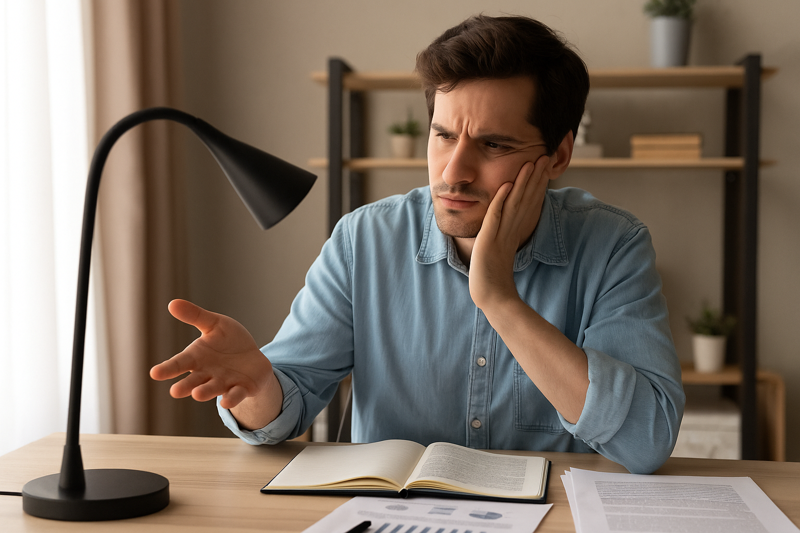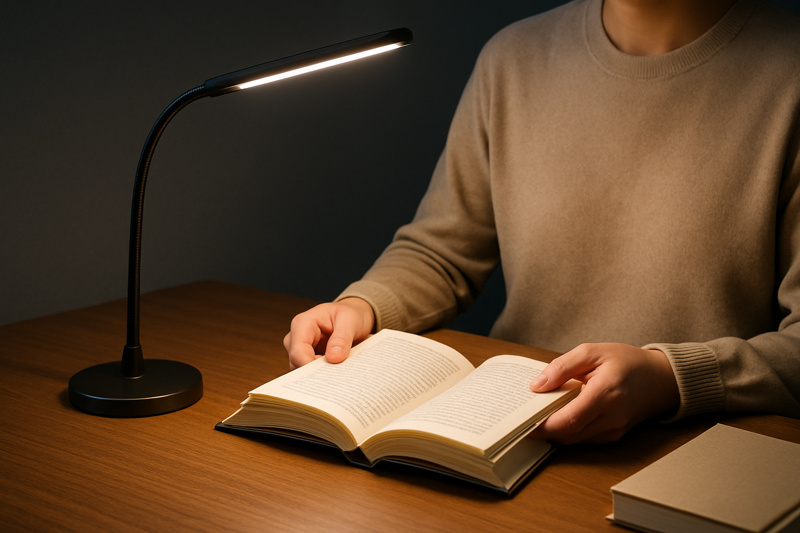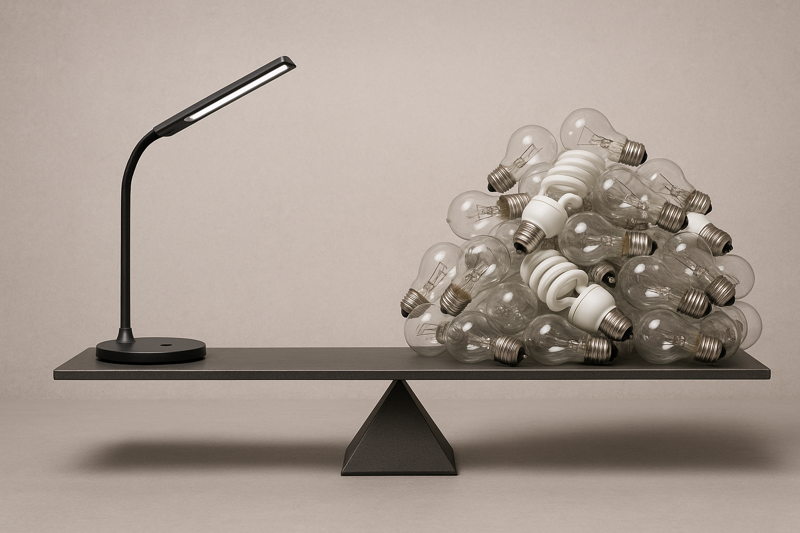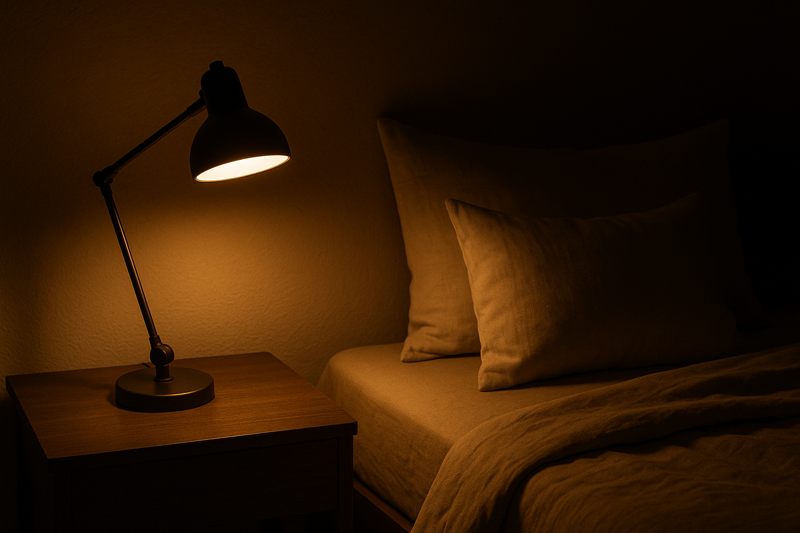
Struggling to unwind after a late work session, then tossing and turning all night? The bright light from your lamp is likely sabotaging your sleep. Imagine your lamp actively helping you wind down.
LED desk lamps improve sleep with features like adjustable warm color temperatures, automated timers, and dimmable ambient lights, which help regulate your body's natural sleep cycle by reducing stimulation before bed.
Let's explore the specific settings that can turn your desk lamp into a powerful, unlikely sleep aid.
How Can Switching to Warm Light at Night Signal Your Brain to Sleep?
Is your brain still buzzing hours after you've shut your laptop? That crisp, white light that kept you focused is now preventing your brain from producing sleep hormones. You can use your lamp to mimic a natural sunset and tell your body it's time to rest.
Using an LED lamp's warmest color temperature setting, like 3000K, significantly reduces blue light exposure in the evening, which helps your brain produce the sleep hormone melatonin and prepare for rest.
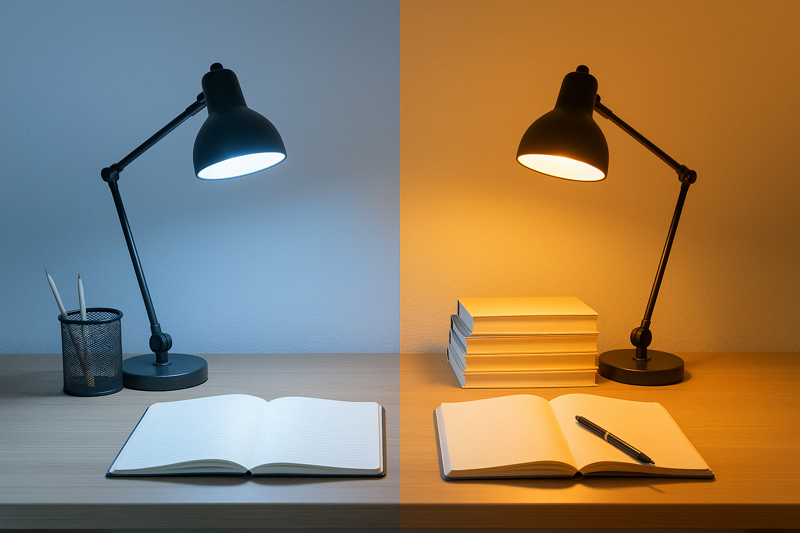
In my role as a Marketing Manager, I've seen a major shift in what customers demand from lighting. It's no longer just about brightness. My B2B clients—the product managers and buyers—are now highly focused on health and wellness features. The biggest topic is blue light. The science is simple: the cool, blue-toned light that mimics daylight is great for keeping us alert, but it's a disaster for sleep. It tricks our brains into thinking it's still midday, shutting down the production of melatonin, the hormone that tells our bodies it's time to sleep. This is why providing lamps with a wide range of "color temperature adjustment" is no longer a luxury; it's a core feature for any lamp designed for modern life.
The Science of Color Temperature and Your Internal Clock
Your body runs on an internal clock called the circadian rhythm, which is heavily influenced by light. Cool, blue-toned light signals "daytime" and alertness. Warm, yellow-toned light signals "evening" and relaxation. A quality LED lamp gives you the power to control this signal. Many models offer up to five distinct color temperature modes, typically ranging from a very cool 6000K down to a very warm 3000K. By consciously switching to the warmer settings in the evening, you are actively managing your light environment to support, rather than disrupt, your natural sleep cycle.
How to Create a "Digital Sunset" with Your Lamp
Think of your lamp's settings as a way to create a personal sunset at your desk. About an hour or two before you plan to sleep, start transitioning the light.
- Shift the Color: Move from a cool (5000K-6000K) or neutral (4200K) setting to the warmest available option, which is usually 3000K or 3500K. This is the most important step in reducing blue light1.
- Lower the Brightness: Use the "sliding dimmer" to gradually decrease the intensity of the light. This intuitive adjustment is far better than jarring preset levels.
| Color Temperature2 | Blue Light Level | Effect on Sleep Hormones | Recommended Use |
|---|---|---|---|
| 5000K - 6000K | High | Suppresses melatonin, promotes alertness. | Daytime work, when focus is needed. |
| 3000K - 3500K | Low | Allows natural melatonin production, promotes calm. | 1-2 hours before bed, for reading or winding down. |
What Bedtime Routines Can a Smart Lamp Automate for Better Rest?
Do you ever fall asleep while reading, only to wake up at 3 AM with the light still blazing? This accidental all-nighter disrupts your deep sleep cycles. Imagine your lamp having the sense to gently turn itself off for you.
Smart LED lamps can automate bedtime routines with features like a 45-minute auto-off timer and an integrated alarm clock, which help establish and maintain a consistent sleep schedule crucial for sleep quality.
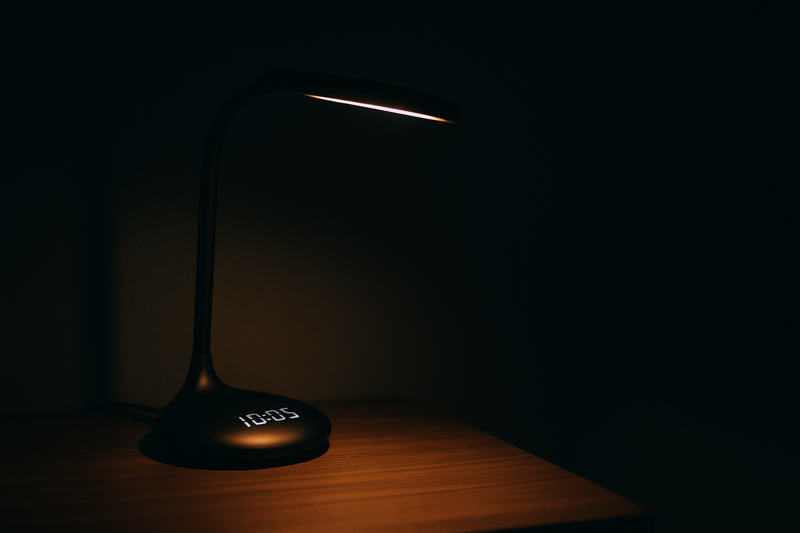
One of the biggest challenges to good sleep is consistency. As someone who helps develop and market these products, I know that convenience is key to building good habits. That's why we build in features that do the work for the user. A perfect example is the "turn off the lights regularly" function. It’s a simple one-click button that sets a 45-minute countdown. It's designed for that last bit of reading or journaling before bed. You get the light you need to finish your day, but you don't have to worry about it staying on all night if you doze off. It’s a small piece of automation that removes a common barrier to a good night's sleep.
The "Set It and Forget It" Auto-Off Timer
Consistency is the cornerstone of healthy sleep, and a timer helps enforce a consistent "lights out" time. The 45-minute auto-off feature is a brilliant tool for this. It allows you to wrap up your day without the mental burden of watching the clock.
- For Reading: It's the perfect duration for a chapter of a book.
- For Unwinding: It gives you a defined period to journal, meditate, or listen to music without harsh overhead lights.
- For Preventing Disruption: If you fall asleep, the lamp takes care of itself, ensuring your sleep isn't interrupted by a bright light later in the night. You can simply click the button to start the timer, and if you change your mind, one more click cancels it.
Using the Integrated Alarm3 for a Sleep-Wake Cycle
Just as important as a consistent bedtime is a consistent wake-up time. Many advanced lamps include a full-featured perpetual calendar and alarm clock on their HD display. You can set the hour and minute for your alarm, and even choose from multiple ringtones. Some models have a brilliant feature where the main light automatically turns on when the alarm rings, gently easing you out of sleep instead of jolting you awake in the dark. This creates a powerful, consistent sleep-wake cycle4, which is one of the most effective ways to improve sleep quality over time.
| Automated Feature | Function | How It Improves Sleep Quality |
|---|---|---|
| Auto-Off Timer | Turns the main light off after a set period (e.g., 45 minutes). | Prevents light from disrupting sleep if you doze off. |
| Integrated Alarm | A full-function alarm clock with customizable settings. | Enforces a consistent wake-up time, stabilizing your circadian rhythm5. |
| Snooze Function | Pauses the alarm for a set interval (e.g., 1-60 minutes). | Provides a gentle buffer for waking up. |
| Alarm-Synced Light | The main light turns on when the alarm sounds. | Eases your body into wakefulness more naturally than sound alone. |
How Can a Lamp's Ambient Features Create a Sleep-Friendly Environment?
Is your bedroom secretly filled with distracting pinpricks of light from chargers, clocks, and other electronics? These tiny light sources can be surprisingly disruptive to your sleep. A well-designed lamp can help you consolidate and control these sleep saboteurs.
A quality LED lamp creates a better sleep environment by including an adjustable, "not dazzling" display backlight and a dedicated multi-level night light, ensuring your room stays dark and free from disruptive light.
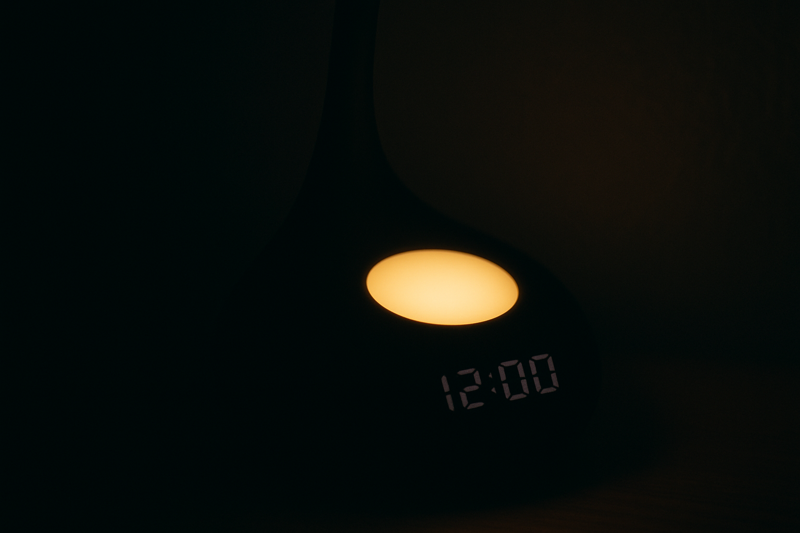
I remember talking to a hotel product buyer who was adamant about sourcing lamps where every single light source could be controlled. He said their number one guest complaint was "light pollution" in the room from alarm clocks and TV standby lights. This highlights a crucial point: for a truly sleep-friendly environment, you need total control over every photon. This is why we've focused on what we call the "not dazzling" design philosophy. The main display on our lamps has a three-level adjustable backlight, so it can be dimmed or turned off completely. The dedicated night light also has three brightness settings, so you can have a very gentle glow for safety without it being bright enough to disturb your rest.
The "Not Dazzling" Philosophy: Controlling All Light
The goal is to eliminate any light that you don't actively need. A bright digital clock display can be enough to pull you out of a deep sleep cycle.
- Adjustable Display Backlight: The ability to cycle through three brightness levels for the LCD display is a critical feature. You can have it bright during the day for visibility, but dim it down to the lowest setting or turn it off at night. This alone removes a major source of sleep-disrupting light pollution from your bedroom.
- Consolidating Devices: By integrating the clock and charger into the lamp, you eliminate the need for a separate, often overly-bright, alarm clock and the glowing lights from charging bricks. It declutters your nightstand and your light environment.
The Gentle Glow of a Dedicated Night Light
Sometimes you need a little bit of light at night, perhaps for a trip to the bathroom or to check on a child. A dedicated "night light function6" is the perfect solution. With its own multi-level brightness adjustment7, you can choose the faintest possible glow that still meets your needs, preserving the dark environment your brain requires for quality sleep.
| Ambient Light Source | Brightness Control | Ideal Use Case for Sleep |
|---|---|---|
| Display Backlight | 3 adjustable levels (can be turned off). | Set to the lowest level or off during sleep to eliminate light pollution8. |
| Night Light | 3 adjustable levels of soft light. | Provides a very dim, safe glow for navigating in the dark without disruption. |
Conclusion
Use your lamp’s warm light, timer, and dim ambient settings to actively improve your nightly rest and overall sleep quality.
-
Understanding blue light's impact on sleep can help you make informed decisions about your lighting choices for better rest. ↩
-
Exploring the relationship between color temperature and sleep can enhance your nighttime routine and improve your overall well-being. ↩
-
Explore how an integrated alarm can enhance your sleep routine and improve your overall sleep quality. ↩
-
Learn about the science behind sleep-wake cycles and their impact on your health and well-being. ↩
-
Discover the importance of circadian rhythms in regulating sleep patterns and overall health. ↩
-
Explore this link to understand the benefits and features of a night light function for better sleep. ↩
-
Learn how multi-level brightness can enhance your nighttime environment for restful sleep. ↩
-
Discover the impact of light pollution on sleep and ways to minimize it for better health. ↩


